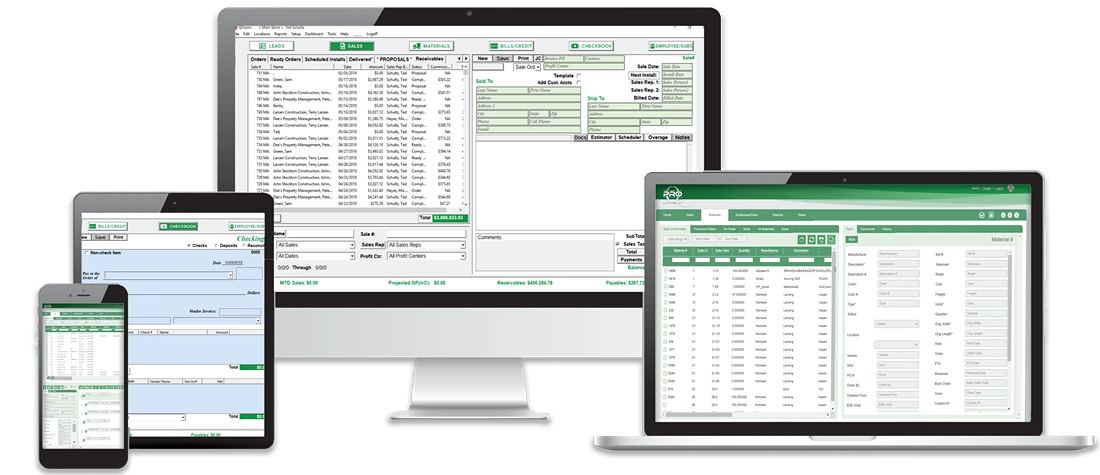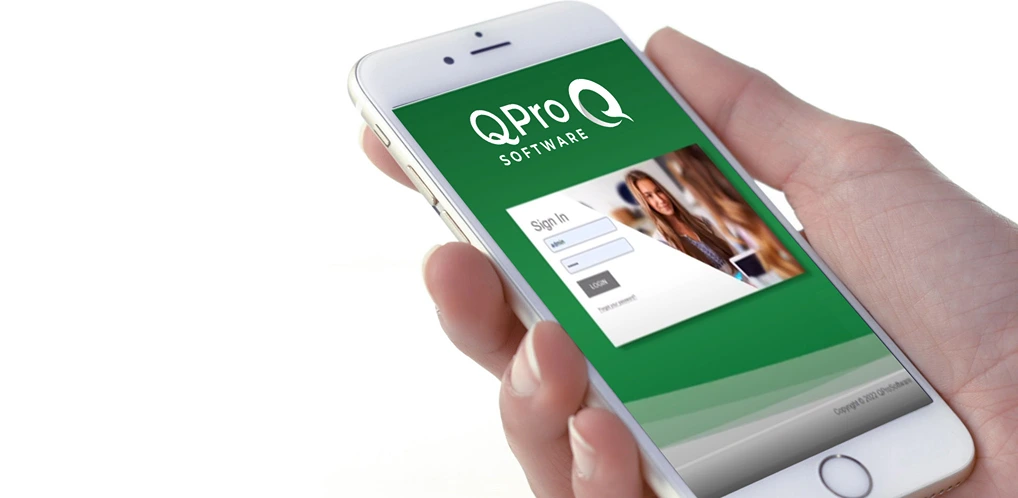For starters, I think we’d like to address the question, “What makes a software cloud-based?” Because there’s just a ton of confusion out there. Not just in the flooring industry, but with the general population of technology users.
Some of the confusion stems from the fact that “cloud-based” is a popular buzzword right now, and so software companies use it for marketing purposes, because they know that it’s appealing and communicates remote access and other benefits. The problem is, it is a very broad term that can actually cover a lot of different types of products. So in an effort to explain, I would like to break software into 3 different categories:
- On-Prem, Installed Software - This refers to software that is installed and executed locally on your own computer, or on your company’s own network (in your building). For example, a Microsoft Excel program that someone has downloaded onto your computer’s desktop. You double click the icon and run the program from there. You either install the program yourself, or an IT person does it for you and your company.
- On-Prem Software Hosted on the Cloud - So here is where things can get a bit confusing. Anytime somebody is running a software application that is not running on their own computer, or within their own personal network, the software is considered to be 'cloud based'. So you can have an installed, on-prem software program, that you access through a network hosted by a third-party company, “through the cloud”. The software type and programming is the same as the first example above, but your access is different. And thus sometimes that is called “cloud software”. This type of technology has been around for decades, and is widely used.
- To further muddy the waters, sometimes a software company will build in access to their program through a browser. It is still an installed, on-prem software, but you access it by going to a browser site which then connects you remotely to wherever that software is installed. However, they might call it “browser-based” and “cloud software” because you access it via the browser, but the software itself is still the older type of technology, installed somewhere, and is programmed accordingly.
- SaaS (software as a service) or Browser-Based Software - This is the newest technology. These types of software programs are created in a completely different way and language than an on-prem program. They are built to be accessed through, and run within, the internet browser. The look and feel of the software is a lot like how you interact with a website page. You can also access it wherever and whenever, as long as you have an internet connection and are using a device that has an internet browser.

A Few Examples:
Here’s an example of the different types of software. Intuit offers QuickBooks Pro, which is an installed on-prem software product. This program could either be accessed through downloading it onto your own computer or business network (Example 1), or by accessing a version of it that is available to you through a third-party hosted network (Example 2). Intuit also offers QuickBooks Online - a SaaS, browser-based software program that you don’t download, but rather access through your browser. You typically pay for access to it on a monthly or yearly basis (Example 3).
Another example is QFloors and QPro. QFloors is an installed, on-prem software (Example 1). But we have a product called QCloud, which allows our customers to access QFloors in a cloud environment (Example 2). We have also developed QPro, which is an online, browser-based software (Example 3). QFloors and QPro, although created by the same company, and offering many of the same features, do not share any common code between them, because the technologies are so different.
As an aside, just to help give context, we only know of two true SaaS software products (of any consequence) within the flooring industry. And QPro is one of those two products.
So basically, it’s a matter of semantics. All software, even installed on-prem programs, can potentially be labeled “cloud-based”, if you are accessing them remotely rather than via your own computer or company network.

What does cloud based software bring to the table that non-cloud-based software may not?
Generally speaking, one of the biggest benefits cloud-based software provides is remote access. You don’t have to be in your store or place of business to utilize the software. So you can work from home, from vacation, etc.
Cloud-accessed software (either type) typically has better backup and security systems than an individual dealer would have within their own company. This means more reliable backups and a higher level of protection.
Here are a few other pros/cons of each type of software.
On-Prem: Because it is installed locally on your own computer, or your company’s own network, a business owner has more control over things. If the dealer/owner knows what they are doing, or has a highly-trusted and highly capable IT contractor or employee handling things, they can have a higher degree of control and customization.
The risk here is that if they don’t know what they are doing, or don’t know enough to recognize when their IT person is lacking, they are at a higher risk for issues like backups not happening and losing data. Some of our customers who have this type of setup had a nightmare on their hands when they were hit with natural disasters, theft, and ransomware. However, you can realize some cost savings from this type of software and setup. Although there is a much higher upfront cost. Particularly if a dealer is trying to set up their own network and remote access. Outside IT help is usually needed, and it can be expensive. But within 3 years or so, you can recoup that investment and start to realize some cost savings, since you are not paying monthly fees for hosting.
On-Prem Hosted on the Cloud: Hosting companies are typically experts in providing secure environments and ensuring that backups are happening regularly and correctly. Your data is not on your computer or a computer at your location, so things like fires, natural disasters, and theft pose less risk, as far as it impacts your data and your systems. Up time is typically greater than using your own local system, reliability is generally higher, and when there are outages or failures, experts are taking care of it and getting you back up and going.
In addition, as mentioned earlier, there are the advantages of remote access (that you don’t have to set up yourself).
SaaS/Browser-Based: This provides all of the benefits stated above, as well as additional advantages. With this type, you can run the software on any type of device – Apple/Mac/Android/Windows/Unix/etc., and tablets, laptops, desktops, phones, etc. It just needs to have internet connection and an internet browser. With hosted on-prem systems, that might not necessarily be the case. In addition, the look and feel of this type of software is more modern, user-friendly, and familiar to people. People are used to this type of navigation, and most like it. In addition, the upfront cost of a SaaS system is usually much lower than on-prem. One other benefit is that being able to integrate and share data with other 3rd-party browser-based software products is far superior to anything else, because of how quick and easy it is to develop integrations. So companies using this type of technology will have huge advantages in the future, in partnering with and linking software programs together.

Are QFloors and QPro cloud-based?
QPro is a 100% browser-based SaaS software. For the past several years we have been pouring a lot of resources into its development. We have customers using it now, but we also continue to invest a huge amount of money and time towards adding features and capabilities to QPro. A team of developers are working daily to continue to build out QPro. It is a costly endeavor, but we believe it is worth it, because as any technology expert would tell you, this is where the future is headed. It’s the Long Game, and we are committed to it. The industry will benefit, in the long run.
QFloors is an on-prem software that can be hosted in the cloud via QCloud. Many of our customers utilize this option. It is a very robust system, with a ton of features. But we also recognize it is not the future.
In summary, I hope this gives you a better understanding of cloud-based software and the different solutions that are out there. I’m excited for the future, and can’t wait to see how cloud technology evolves in the future.
This article is based on thoughts QFloors president Chad Ogden shared, related to a story Floor Covering News was writing about cloud computing.
